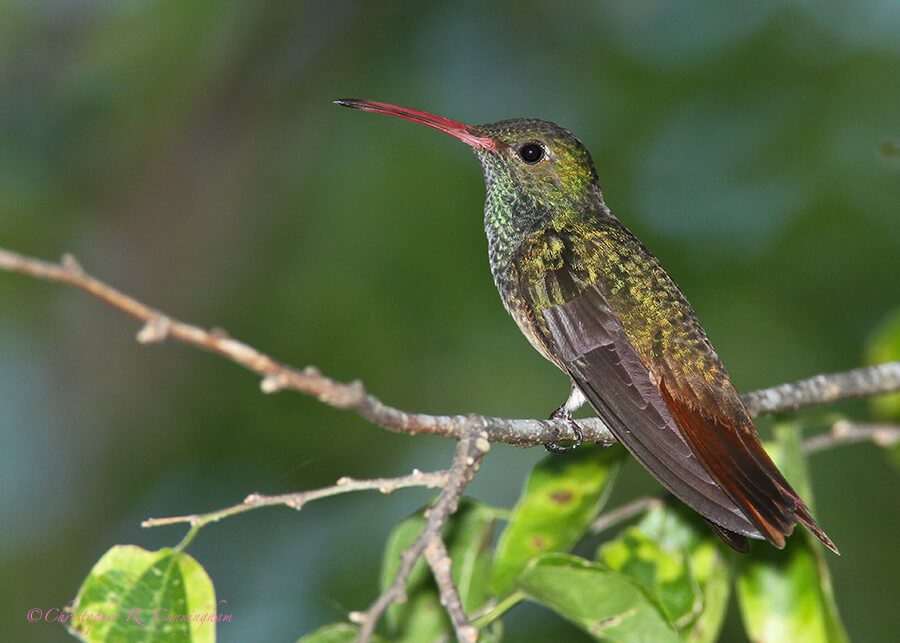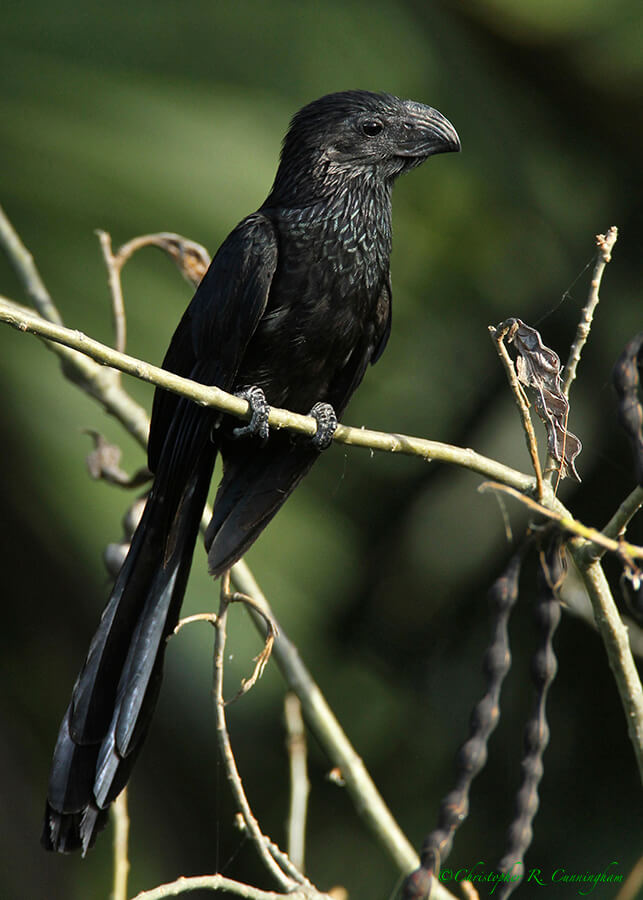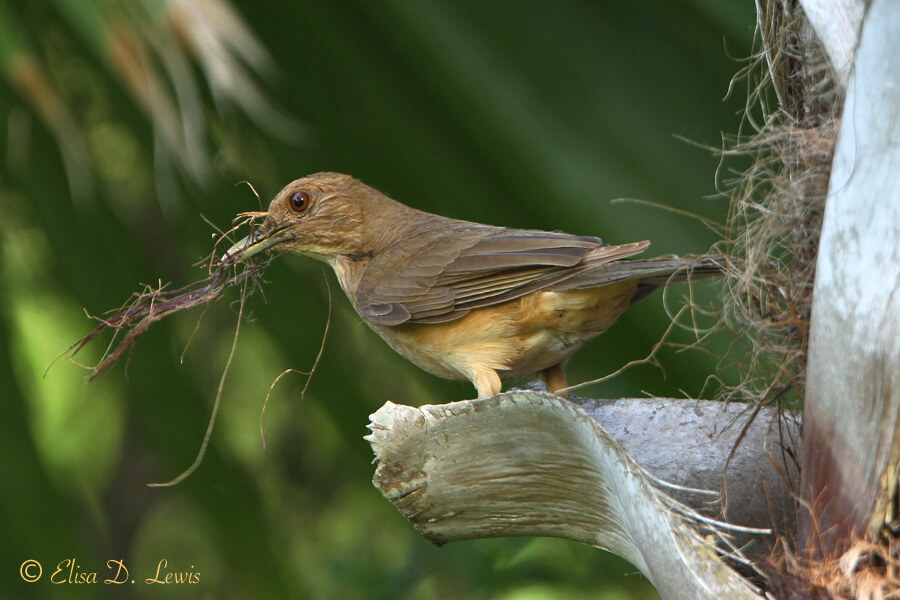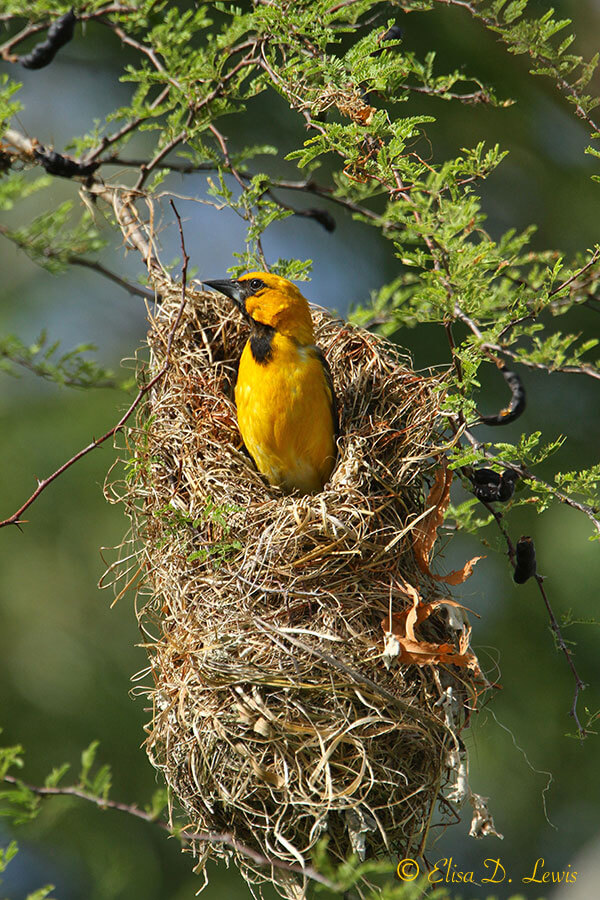
Chris’s Field Notes: We just returned from a three-day birding adventure in the Lower Rio Grande Valley (RGV) in the vicinity of Santa Ana National Wildlife Refuge and Estero Llano Grande State Park. We stayed at Casa Santa Ana, adjacent to the wildlife refuge—highly recommended for the hospitality and birding the extensive grounds. Although the heat, humidity, and biting insects (not to mention chiggers) tested our resolve, we saw a number of new species and obtained nice (or at least better than we had!) shots of some Valley specialities, essentially Mexican species with ranges that barely extend into South Texas in summer.
Birds notable for us included: Buff-bellied Hummingbird, Groove-billed Ani, Clay-colored Robin, Northern Beardless-Tyrannulet, Altamira and Hooded Oriole, Couch’s Kingbird, Olive Sparrow, and Brown-crested Flycatcher. Nests and young birds were everywhere. I saw one adult male Black-chinned Hummingbird at Estero Llano Grande State Park (at the extreme southern extent of their summer range). Although we explored significant wetlands, including some with profuse amphibians (leopard frogs), waders were rare (strangely it seemed), compared to the Upper Texas Gulf Coast. I witnessed a display by the male Bronzed Cowbird. The bird was on a low branch overhanging a path at Santa Ana NWR when it lowered its head, roused its feathers, and flapped its wings while making whistling, buzzing, and clicking sounds. Spectacular.
The Tamaulipan mezquital ecoregion through which the Rio Grande winds is a harsh place in the summer. Scattered trees, often mesquite and “acacia” surrounded by grasses and low shrubs predominate. Shade is usually incomplete. Mosquitos were not a significant problem, but other types of biting (and bottle) flies abound. Dragonflies like Roseate Skimmer (Orthemis ferruginea) and Band-winged Dragonlet (Erythrodiplax umbrata) were profuse and offered many photographic opportunities. I didn’t see many mammals, only one Southern Plains Woodrat (Neotoma micropus). Lizards were abundant, especially the Rose-bellied Lizard (Sceloporus variabilis). White skies due to high humidity often made photography difficult. Many times I had a bead on an interesting bird only to have a dazzlingly white cloud drift in behind and ruin the shot. All in all, an amazing place, and I can’t wait to get back during cooler weather.


Elisa’s Field Notes: This was our first late spring/early summer visit to the Lower RGV, and I hoped that the effort (in defiance of the heat!) would yield many observations of nesting, nestlings, fledglings, etc. I was not disappointed! With excellent summer birding in our own Gulf Coast backyard, we see quite a bit of bird family life, but mostly of the waterbird persuasion. During our short trip into Texas’ subtropical scrubland, I was able to spot White-eyed Vireo, Long-billed Thrasher, Plain Chachalaca, Golden-fronted Woodpecker, and Altamira Oriole juveniles just beginning to make it on their own. Our timing was rewarding in other ways, too. We essentially had the refuge and the park to ourselves! Our host mentioned that anyone who was “out here at this time of year is committed.” I suspect that he might have meant to say that we should be committed!
I was also charmed by the abundance of nests and nesting behavior. Oriole nests, in particular, are standouts. I saw the Altamira Oriole pictured below fly directly into the nest as it swung and bobbed in the wind. It must be somewhat like living in a small boat out at sea. Altamira Oriole nests are typically woven to a fork of a tree branch and, sometimes, to a telephone wire as we saw outside of the state park. I wonder if building the nest so far from stable branches is one way to make your nest more inaccessible to predators . . . Regardless, as an amateur fiber artist, any creature that weaves or works with fiber is OK by me!

What dreadful hot weather we have! It keeps me in a continual state of inelegance.—Jane Austen
©2014 Christopher R. Cunningham and Elisa D. Lewis. All rights reserved. No text or images may be duplicated or distributed without permission.